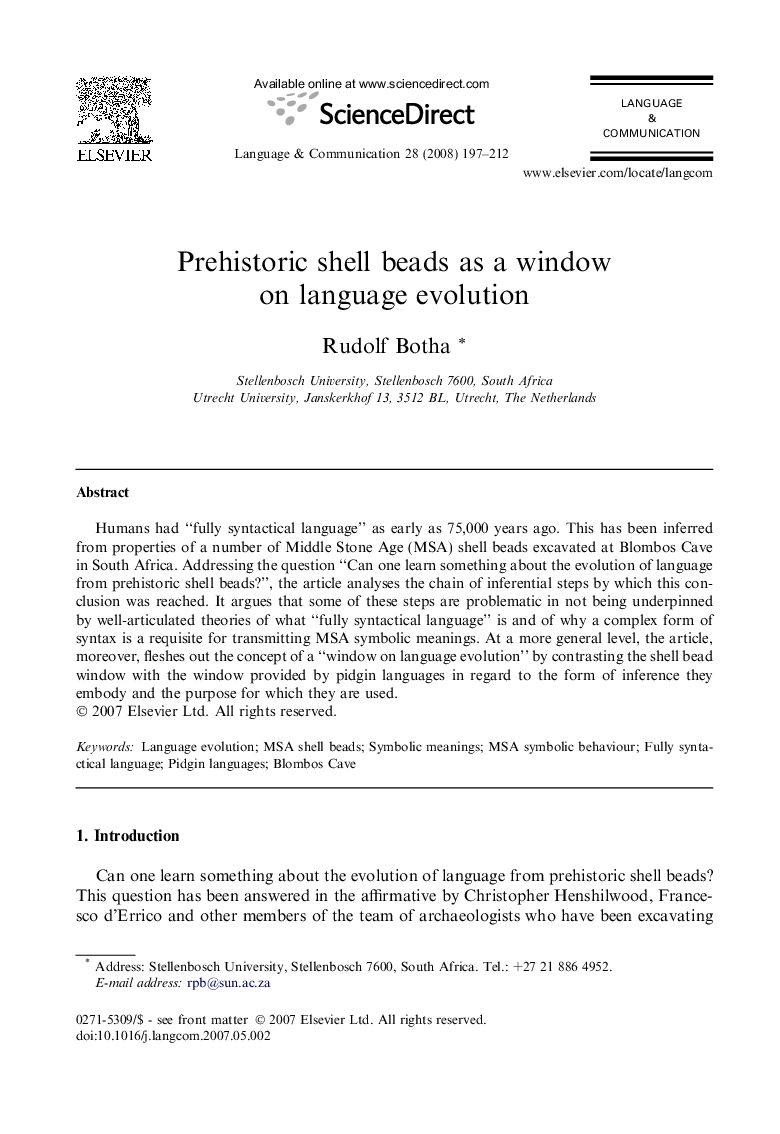| Article ID | Journal | Published Year | Pages | File Type |
|---|---|---|---|---|
| 935064 | Language & Communication | 2008 | 16 Pages |
Humans had “fully syntactical language” as early as 75,000 years ago. This has been inferred from properties of a number of Middle Stone Age (MSA) shell beads excavated at Blombos Cave in South Africa. Addressing the question “Can one learn something about the evolution of language from prehistoric shell beads?”, the article analyses the chain of inferential steps by which this conclusion was reached. It argues that some of these steps are problematic in not being underpinned by well-articulated theories of what “fully syntactical language” is and of why a complex form of syntax is a requisite for transmitting MSA symbolic meanings. At a more general level, the article, moreover, fleshes out the concept of a “window on language evolution” by contrasting the shell bead window with the window provided by pidgin languages in regard to the form of inference they embody and the purpose for which they are used.
